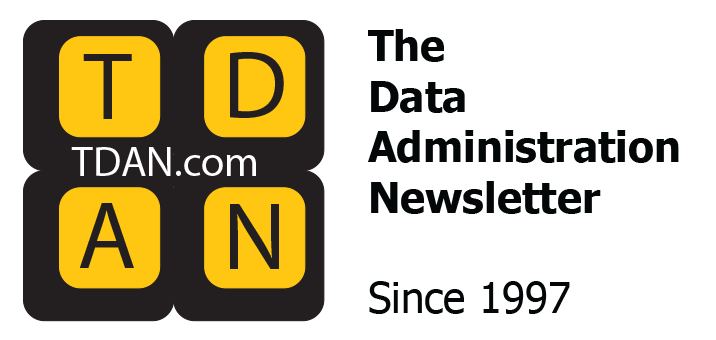
Imagine data governance as the management of a vast water canal system. Just as water flows from its headwaters through constructed channels into integrated lakes and finally reaches those who depend on it, data streams from various sources through organizational systems before reaching those who make decisions with it.
The fundamental question we face mirrors one that water engineers have grappled with for centuries: Where along this journey should we focus our controls? Should we purify and standardize at the source where the water first enters our system? Should we instead focus our efforts on the integrated lakes where waters merge and settle? Or is it most effective to implement filtration at the point of distribution, just before consumption?
Each choice represents a distinct philosophy of governance, with its own advantages and trade-offs. The question of timing and placement of governance controls ultimately shapes not just the quality of what flows to end-users, but the efficiency and resilience of the entire system.
Three Philosophies of Data Governance: Finding the Right Flow
Just as water engineers must decide where along a canal system to implement controls, organizations face a fundamental question about where to place data governance efforts. Three distinct philosophies have emerged, each with its own approach to ensuring that data flows effectively through the enterprise.
The Source Philosophy: Governance at the Headwaters
The first philosophy places governance at data origins — ensuring quality where information first enters organizational systems, like protecting mountain springs or filtering river water at entry points.
This approach offers significant advantages: Pre-cleansed data reduces downstream remediation costs while enabling faster, friction-reduced decision-making throughout the organization.
However, an exclusively source-focused approach requires coordination across numerous data producers with different priorities and constraints. Like regulating every tributary feeding a waterway, source-only governance creates coordination burdens that may outweigh benefits, while potentially creating bottlenecks that slow information flow.
The Reservoir Philosophy: Governance in the Middle
The second philosophy centers governance on data reservoirs — lakes, warehouses, and integration points where information pools before distribution, resembling municipal water systems collecting from multiple sources into treatment reservoirs.
This approach offers economies of scale by concentrating efforts at centralized points, creating natural opportunities for cross-domain harmonization as information converges from different business units.
Yet governance focused solely in the middle has limitations. Data entering in a flawed state carries those flaws downstream, and by the time it reaches central repositories, context may be lost. The volume at these integration points can also create bottlenecks, potentially slowing information delivery.
The Consumption Philosophy: Governance at Point of Use
The third philosophy places governance primarily at consumption points — ensuring appropriate controls when data is accessed for decision-making, paralleling water systems that focus on treatment at community wells or household taps.
This approach allows tailoring to specific consumption needs. Different use cases have different quality requirements, and point-of-use governance adapts quickly to changing business environments.
However, exclusive reliance on last-mile governance typically leads to redundancy and inconsistency. When each department implements its own rules, the same data may be transformed differently across the organization, creating multiple versions of truth while potentially slowing analysis processes.
The Balanced Approach: Distributed Governance Responsibilities
Rather than choosing a single philosophy, effective data governance distributes responsibilities throughout the information flow. Like modern water systems implementing multi-barrier approaches, this balanced strategy creates a governance continuum tailored to the natural advantages of each stage.
Source-Level Governance: Essential Quality and Ownership
In the balanced approach, source governance focuses on quality and speed while ensuring minimum standards:
- Governance Structure: Embedded data stewards within operational teams establish fundamental standards while maintaining process velocity.
- Data Ownership: Business units creating or acquiring data take responsibility for initial quality within streamlined guidelines.
- Policy Application: Only essential policies are implemented — focusing on basic standards, regulatory compliance, and elementary validation rules.
- Technology Enablement: Business units maintain technology autonomy while adhering to connection standards ensuring downstream compatibility.
- Scope and Boundaries: Governance scope remains deliberately narrow — focusing on what data enters the ecosystem, why it’s acquired, and baseline quality requirements.
Middle-Stage Governance: Comprehensive Standardization
The reservoir stage serves as the primary governance checkpoint with robust controls:
- Governance Structure: Dedicated data management teams establish and enforce enterprise standards with cross-functional governance oversight.
- Data Ownership: Ownership transitions to enterprise data stewards who manage information as a shared organizational asset.
- Policy Application: Comprehensive policies address quality, master data, metadata, and cross-domain standardization with detailed reconciliation processes.
- Technology Enablement: Enterprise-scale platforms implement consistent rules across domains while maintaining connections to both sources and consumption points.
- Scope and Boundaries: This layer focuses on cross-domain relationships, complex transformations, historical governance, and establishing definitive sources of truth.
Point-of-Use Governance: Access and Appropriate Use
The final stage focuses primarily on ensuring appropriate data utilization:
- Governance Structure: Business unit data stewards focus on proper consumption within approved boundaries.
- Data Ownership: Consumers take responsibility for appropriate application while providing feedback to upstream stewards.
- Policy Application: Governance emphasizes access controls, privacy protection, and use-specific policy interpretations.
- Technology Enablement: Self-service capabilities with built-in guardrails balance protection with usability.
- Scope and Boundaries: The narrow focus addresses access management, PII and sensitive data protection, and quality metrics that highlight issues requiring upstream resolution.
This balanced, multi-stage approach recognizes that different aspects of governance are best addressed at different points in the information flow. By distributing responsibilities appropriately, organizations can maintain both governance rigor and information velocity — ensuring that when decision-makers draw from the enterprise reservoirs, what flows to them is clean, consistent, and appropriate for their needs.
Building a Governance Culture: Beyond Infrastructure
Even the most perfectly engineered canal system requires stewardship among those living along its banks. Similarly, data governance depends on cultivating data citizenship — where everyone touching data understands their responsibility. Like communities developing water conservation habits that persist beyond shortages, organizations must invest in data literacy that makes governance second nature. When people understand how their data handling affects downstream users, governance transforms from a bureaucratic burden into a shared commitment to enterprise intelligence.
Governance Across Different Data Domains
Our balanced governance approach must adapt to different data domains, each with unique requirements.
Master Data Governance
Master data (core entities like customers and products) demands rigorous governance — focusing on uniqueness at source, integration into golden records in the middle, and consistent representation at point-of-use — resembling how primary water reservoirs serving multiple communities require special attention to purity.
Transactional Data Governance
Transactional data flows through organizations in high volumes — prioritizing accuracy at capture, aggregation in the middle, and access tracking at consumption — similar to irrigation systems focusing on flow management over extensive treatment.
Analytical Data Governance
Analytical data requires governance tailored to its transformative nature — establishing lineage connections at source, methodology consistency in the middle, and interpretation guidelines at point-of-use — paralleling how specialized laboratories analyze water samples with focus on methodological frameworks.
Conclusion: Finding Your Flow
As you design your organization’s approach to data governance, consider your unique information landscape when distributing governance efforts. Our balanced approach — with minimal controls at the source, comprehensive standardization in the middle, and targeted governance at consumption points — maintains both governance rigor and information velocity.
Remember that data ecosystems evolve over time, requiring flexible governance as your organization grows. Most importantly, invest in data citizenship that transforms governance from a compliance exercise into a shared commitment. With this thoughtful distribution of responsibilities, data becomes not just a resource but a renewable source of organizational advantage.
